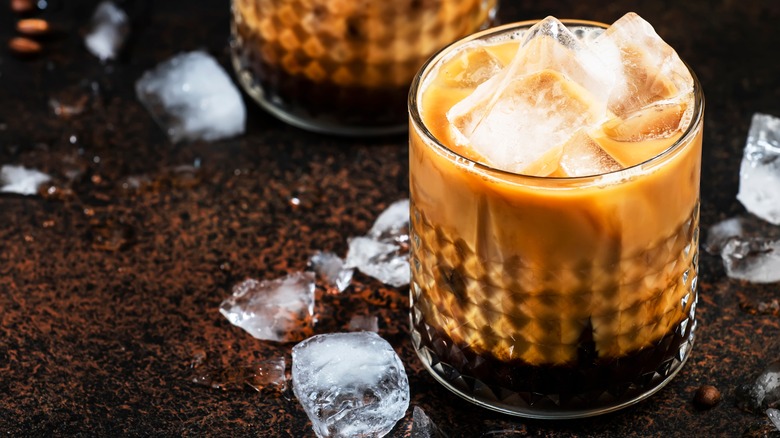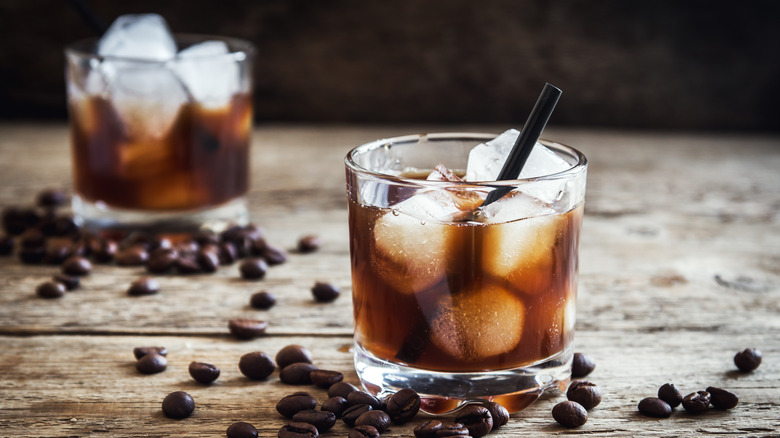The Murky History Of Black And White Russian Cocktails
Few moments in cinema have impacted cocktails quite like "The Big Lebowski". The White Russian was once a fading, underappreciated beverage, and the flick roared into the limelight. Watching Jeff Bridge's lovably chilled character throw down one sling after another — who wouldn't want a sip?
The beverage undeniably entices with its simplicity, mixing in three readily available components; Kahlúa, vodka, and cream. But in fact, the cocktail is derived from an even simpler drink: the Black Russian — which nixes the cream. So how did this effective, two-ingredient drink come about? Well, there's nothing Russian about it.
Instead, the Black Russian was invented in Belgium by Gustave Tops. The story goes the creation took place at a hotel in Brussels in the 1940s when the sling was mixed on the spot for an American ambassador. The Cold War era context, combined with vodka's connection with Russia, coined its moniker. As for its cream-included counterpart? Those origins are as murky as the beverage itself. All that's clear is it came about in the 1960s.
Elaborations of White and Black Russian
With the Soviet Union's closed-off import policy, it's unlikely Kahlúa even made an appearance in Russia until the 1990s. Regardless, it's fun to pay homage to the drinks' names by reaching for Russian vodka. As the only variable alcoholic component of the cocktail, it lends a distinct feel and taste to the rest of the elements. So reach for a reputable Russian brand like Smirnoff. When adding that dollop of cream in the White Russian, make sure to check for freshness — no one wants expired dairy in their booze.
While the inclusion of Kahlúa does define both cocktails, it can be swapped for other spirits, too. A homespun version can involve a homemade coffee liqueur. Or when it comes to established riffs, swap out an ounce of the vodka for Bailey's to craft a Mudslide. Then there's also the Colorado Bulldog, which adds cola to the mix and swaps out cream for milk. Many options and no bad choices — with a dash of interesting history thrown in.

